How do mussels stick to rocks so tenaciously under water?

Answer:
Waterproof adhesive.
Adhesion – (stickiness?)– is one of those topics that can’t be reduced to a simple heuristic, other than to say that successful adhesion results from multiple things, not one thing. Adhesion is a system of things, not a one-and-done thing.
If, however, I was only allowed to know one thing about adhesion, I would want it to be this:
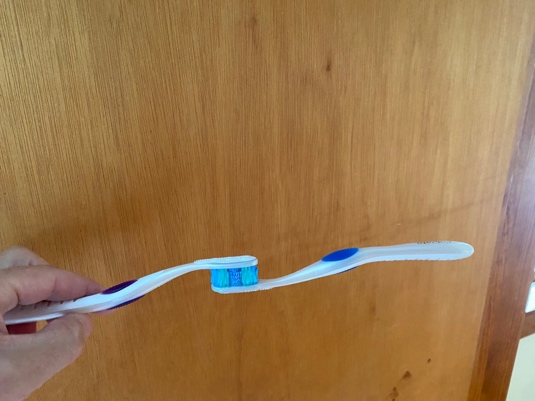
Yes, that’s two toothbrushes stuck together by just mixing the bristles together. That’s how most adhesion works. Wet or dry. Functional adhesion, not molecular adhesion.
Common, every day, useful, adhesives work in a way very similar to what’s going on with those two toothbrushes: long molecules (the bristles on the brush) have some sort of bond with the base material (the brush handle). Those long molecules intermingle with each other. Because of that intermingling they’re not so easy to pull apart, and they can absorb energy like a rubber band. Think of pulling up a big lump of cooked spaghetti from your dinner plate with a fork – you end up pulling lots of individual spaghetti strands that aren’t touching your fork. Same for the sticky stuff on Scotch tape. Same for Elmer’s glue. Same for butyl flashing tape. Same for mortar. Same for space-age, super expensive adhesives that hold all commercial aircraft together. Same for mussels.
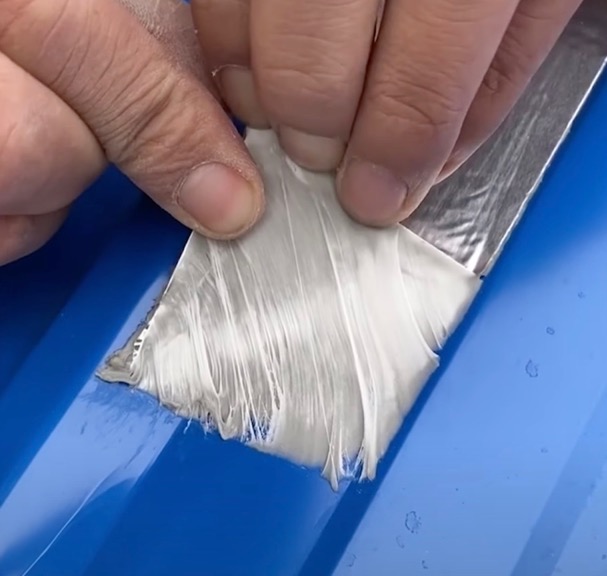
That’s it. Everything after that is deep in the weeds, unfortunately.
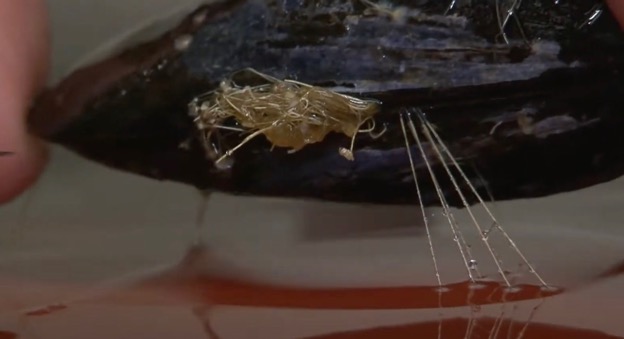
Back to mussels. Here’s the short story: They send out multiple “feet” that will, ultimately, each be stuck to a rock. Each foot creates its own little sealed space on the rock. Within that space the mussel first cleans the rock with a specialty fluid then fills it with a specialty polymer. That polymer, when it sets, has a limited number of bonds with both the foot and with the rock. The long polymer strands are tangled amongst themselves. The tangling provides the bulk of the useful strength of the connection and is the reason the mussels don’t fly off the rocks with every crashing wave. BTW, barnacles do this better. And so does this Phil Swift promoted Flex Tape advertised on late night TV:

All this mussel engineering, chemistry, and physics might seem extraordinary but, it’s not. We’re surrounded by far more extraordinary things, and we’ve learned to make far better – and less toxic – adhesives. If we used the same chemicals as those in mussel feet all the factory workers would probably die of cancer. It’s nasty stuff.[1] Also, somehow, mussel pickers don’t seem to have the trouble that waves have – small children with fingers the size of cornichon pickles can pluck mussels off rocks easily. They peel them off, one foot after another, they don’t knock all the feet off simultaneously. Mussels have not yet evolved to the point that they can resist the peeling forces caused by the hands of small children.
Here’s the thing, everything sticks to everything if those things are close enough together. Adhesion is the rule, not the exception. Molecular adhesion that is, not functional adhesion. When Superman squeezes a lump of crumbly coal in his hand it turns into a diamond. That’s how it works for everything. If he squeezed a handful of seashells, he would make marble. If he squeezed a handful of sand, he’d make rocks. And so on. Just look around – other than air, everything is stuck together, and even the air is stuck to Earth.
On rare occasions, the bonds that hold those things together are chemical but, usually they are something less than chemical. Sometimes they are quasi-chemical[2] but, that doesn’t matter; what matters is that they are electromagnetic bonds of attraction. Electromagnetism is one of the four fundamental forces of nature – gravity, electromagnetic, nuclear, weak. I can’t explain any of those, they just are. The best I can do is try to understand how they manifest themselves.
Anyway, when things get REALLY close together – like one nanometer[3] close – electromagnetic forces start to dominate the situation. This is the physics that underlies all adhesion, so, in that sense it’s necessary. In some cases, it’s the only thing going on. Geckos crawling up-side-down across a ceiling is an example of this – 100% electromagnetic, molecular adhesion. Just stuff really close to other stuff, nothing else. However, that specific bit of interesting physics is nowhere near sufficient, or strong enough, for useful, construction grade adhesion. All that nanometer close electromagnetic force only adds up to about 50 milliJoules per square meter for things that are well stuck together, like two sheets of mica. But even a weak tape has a strength of about 100 Joules per square meter. That’s 2000 times stronger. Weird.
The strength of real adhesion – meaning adhesion of a strength (and direction, and for a duration) that is useful for the sorts of things we want adhesive for, like Scotch Tape on wrapping paper, or flashing tape around a window opening, or epoxy around an anchor bolt – mostly derives from other things: entanglement of long chain polymers and dispersion of forces. The force that would otherwise break the limited number of electromagnetic bonds is absorbed into and dispersed throughout the adhesive material in the same way that bungee jumping ropes prevent your legs from being separated from your torso when you dive off a bridge.

The very specific chemistry and formulation of all adhesives is important and complex; there are a lot of rabbit holes to explore there. However, in the end, that’s a distraction when trying to understand functional adhesion. The core principles of functional adhesion are more related to old-school, structural engineering stress-strain curves, not magical formulations or Chronicles-of-Narnia-esq imitations of natural materials.
Another disappointment related to this topic is the fact that we have only one word to describe two very different things: adhesion. I wish we had one unique word for molecular adhesion and a different word for functional (true) adhesion. But we don’t.
Back in the rabbit hole: If you’ve ever shopped for glue or tape at your local hardware store you might have noticed the incredible variety of choices:

Remember the Goldilocks Principle? – too hot…too cold…just right – well, there are about 10 or 20 material properties and environmental conditions that all must be just so for good adhesion: temperature, humidity, time, shelf life, stiffness, surface energy, Deborah Number[4], Hansen Solubility Parameters, Dahlquist Criterion, etc., etc. And that’s all before the installer on a jobsite gets involved.
This large number of material properties is a blessing and a curse. It’s a blessing in that chemists and manufacturers can concoct everything and anything. If you want a tape that tenaciously sticks to your non-stick frying pan, no problem, it’s available.[5] Of course, you better be prepared to pay up. The curse is that it’s almost impossible for a specifier (read architect) or end user (read contractor) to have the same knowledge as the chemist and formulator. So, unless your spouse is a 3M polymer chemist, you end up listening to marketing departments and relying on experience. Usually that works but, sometimes the tape fails on a nicely wrapped gift. That’s not a recipe for feeling secure in your choices, especially when staying stuck is critical.
But those polymer chemists and formulators have worked a lot of magic. Take, for example, OSB panel sheathing systems with panel tape at the joints. In short, the surface of the panels is a polymer-based, “hard” plastic and the sticky adhesive on the tape is a liquidy, but not too liquidy[6], polymer. Each of those materials is specifically formulated to play nicely with the other and function well in the conditions expected – that’s polymer chemistry and formulation engineering, both of which have been getting better and more complicated since about 1907 when Bakelite was invented by Leo Baekeland.[7] If you could look at the panels and the tape (and Bakelite) under a very powerful microscope you would see that their surfaces are a little fuzzy, like a tennis ball. Not super smooth like a non-stick frying pan. The fuzz is individual polymer strands. When the tape and the panel contact each other that fuzz mixes – sort of like Velcro tape. The two surfaces dissolve into each other a little bit. I know that sounds crazy but it’s true. Solids dissolving into each other is a thing[8] – if things are just right.[9]
The contact between the sticky stuff (the tape) and the non-sticky stuff (the panel) allows molecular adhesion to happen in a few places – a few of the individual strands from the two different materials get close enough to make a few electromagnetic bonds. That’s the necessary, but not sufficient, molecular adhesion between the tape and the panel. The fuzzy polymer strands mixing and dissolving into each other is not molecular adhesion but is the thing that allows the entire system to function as needed. That’s functional adhesion. Adhesion is a system.
Think of this system, fuzz mixing and limited molecular adhesion, like computer wires in a desk drawer, except they’re stapled to the drawer bottom in five or six random places. Pull at that clump of wires and it stretches up yet can’t be removed from the drawer. The staples are doing a little work (that’s molecular adhesion), but the energy of your pull is mostly absorbed by the movement and flex of the wires (that’s dispersion).

If those wires are a little elastic, like rubber bands, then it is even more difficult to remove from the drawer. And if you went the extra step of randomly connecting a few of those wires together along their length with elastic string you’d really, really have something that is a life-size, visual representation of how that panel tape works.

Remember those heavy, concrete ceiling panels that dropped inside the Boston Big Dig tunnel a few years ago?[10] They were anchored to the structural concrete with an epoxy adhesive. Again, think drawer full of elastic wires stapled down in a few places but with stiffer wires this time. Unfortunately, that “extremely sophisticated” thing mentioned previously was ever so slightly off, and the constant load of the heavy panels eventually pulled the anchors out of the concrete. That’s a Deborah Number and flowing mountains thing. And sometimes flashing tape slowly, slowly fails when it is pulled sideways.[11]
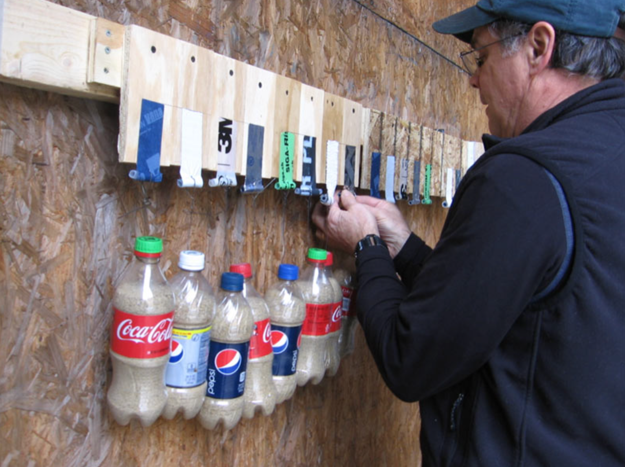
Masonry mortar? Also like a drawer full of wires stapled down in a few places. Except not so elastic and that’s why it (and concrete) stinks in tension. It’s brittle, like glass, not elastic, like rubber. Also, the cement in mortar is an inorganic polymer, not an organic polymer – which is why it is not degraded by sunlight and why we don’t use organic polymer-based cement for exterior masonry mortar. If you want more flexibility, and more stickiness, use lime instead of Portland Cement – the inorganic polymers formed with lime are more flexible and elastic than the inorganic polymers formed with Portland Cement. [12] Brittle wires in your drawer are easy to break. Flexible, elastic wires all tangled up are much more difficult to break and pull out of your drawer. So, maybe specify more flexible mortar in earthquake prone locations.

Caulk in an expansion joint: same, same. There’s a little bit of molecular adhesion at the edges where the caulk meets the concrete plus lots of elastic and flexible entanglement at the macroscopic level within the caulk:
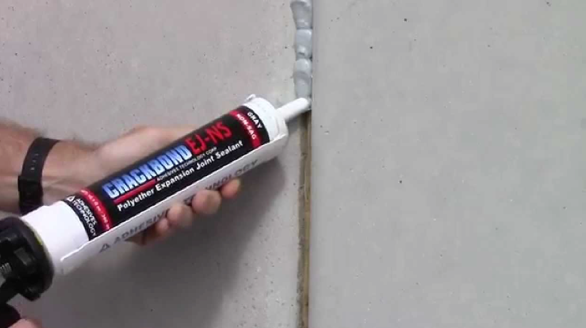
And the backer rod behind the caulk is specially formulated so that it’s not microscopically fuzzy. So, the caulk doesn’t stick to it in the same way that your eggs don’t stick to your non-stick frying pan.
Speaking of food, what about that waterproof thing that mussel adhesive is so good at? Well, that’s just thermodynamics. If the entropy of the assembly is lower when water is adhered rather than adhesive, then adhesion fails – water molecules bump the adhesive molecules off those limited number of places that are molecularly adhered. Once those few points of attachment are lost it doesn’t matter how elastic or stiff the polymers are, they’re not attached to anything.
When you see tape hanging like a piece of leather next to something that it was previously adhered to – like concrete – that’s what you’re looking at: individual water molecules bumped individual polymer molecules off their limited number of electromagnetic bonds (molecular adhesion). If the toothbrush bristles aren’t attached to the brush handle, the two brushes won’t hold together.
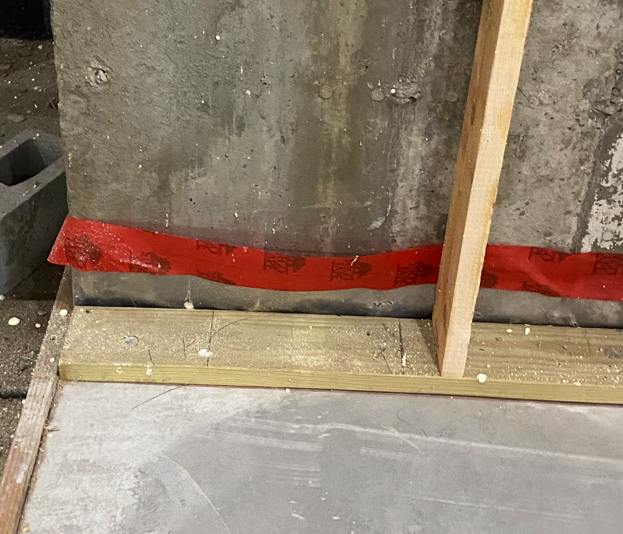
Of course, that bit of physical chemistry knowledge isn’t worth a darn when trying to pick a flashing tape. I’ve never been able to properly complete my entropy calculations while standing in the Home Depot isle wondering which tape to buy. That’s when you need a tape sommelier – you just have to know what works and under what conditions. Experience counts: mussels stick to wet rocks, butyl tape does not.
There is much, much more to adhesion – like the story of Icarus and the limitations of wax as an adhesive[13] – but that’s about it for mussels today.
[1] If you really want to get stuck in with the details of mussel adhesion, I recommend this book: Sticking Together; The Science of Adhesion by Steven Abbott, Royal Society of Chemistry, 2020.
[2] “Quasi-chemical” is usually reserved for discussions involving solutions but, I like it, so, there. For me it’s things like hydrogen bonds, and whatever it is that’s going on with adsorption, and that sort of thing.
[3] A nanometer is one billionth of a meter. If you’re 30, one second represents one billionth of your life. An imaginary cube that is one nanometer by one nanometer by one nanometer can hold about 48 liquid water molecules. 43 if it’s frozen.
[4] Deborah! You know, that famous female Biblical prophet – the one who’s accomplice Jael put a tent spike through the head of the king of the Israelite’s enemy as he slept – who talked about mountains flowing. The Deborah number is a shorthand for describing things that might or might not happen over a long or short timespan: glass flows but the time scale needed to observe this is enormous, sort of like flowing mountains. Some adhesives are strong, until you try to break them fast, then they are weak.
[5] Silicone based adhesives are quite good at this even though they also have very low surface energies. Don’t get hung up on all the surface energy talk out there, it’s over rated.
[7] Really it didn’t get rolling until after 1920 when the structure of polymers was figured out but, the polymer formerly known as Polyoxybenzylmethyleneglycolanhydride – Bakelite – is so important I thought I’d start the clock there. Bakelite, BTW, was the go to plastic for many, many years and there’s probably some within arm’s reach of wherever you are right now.
[8] That’s the Hansen solubility parameter mentioned previously, which is a way of predicting if one material will dissolve in another.
[9] Squeeze two ice cubes together and they “adhere” into one ice cube. Pinch two clean blocks of metal together in outer space and they “adhere” into one block. Think Robert Patrick (the creepy Ultimate T-1000 cop) in Terminator 2.
[10] Well, 2006 but, “a few years ago” is starting to sound better as I age.
[11] That’s Peter Yost, founder of the Wingnut Testing Facility in the photo setting up some super useful, not ASTM and not AAMA tape testing. But with a normal hat this time. Adhesion and PSA tape testing is a whole big separate topic.
[12] Polymer modified thinset adhesive is different but, regarding flexibility, the outcome is similar.
[13] That story has been mis-understood for ages. It’s not about the recklessness of youth or human limitations, it’s about adhesive formulation and the importance of matching material characteristics with the expected service life conditions. Remember, Icarus was also warned not to fly too close to the water. His estate would win in court; Daedalus didn’t meet the standard of care.
